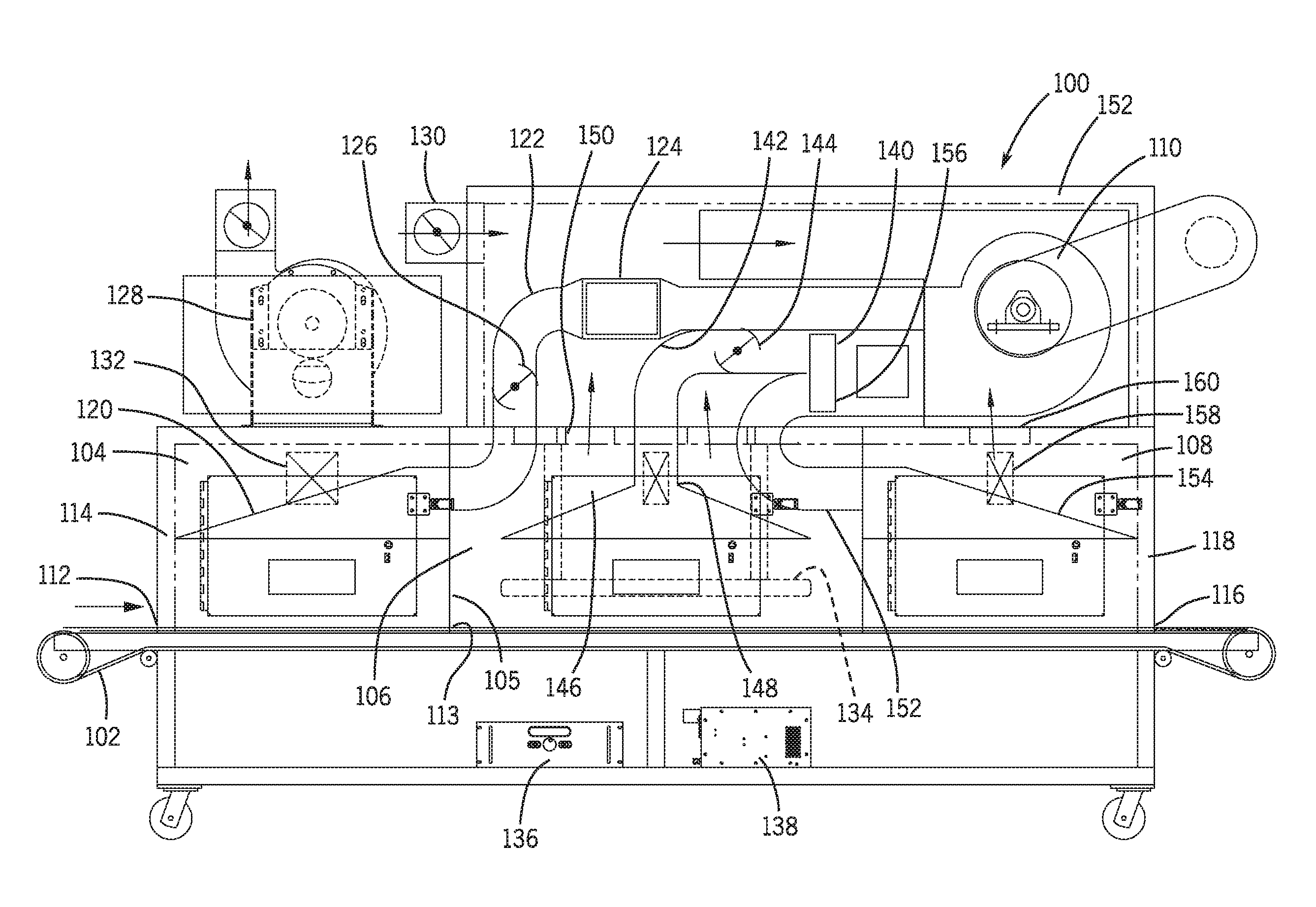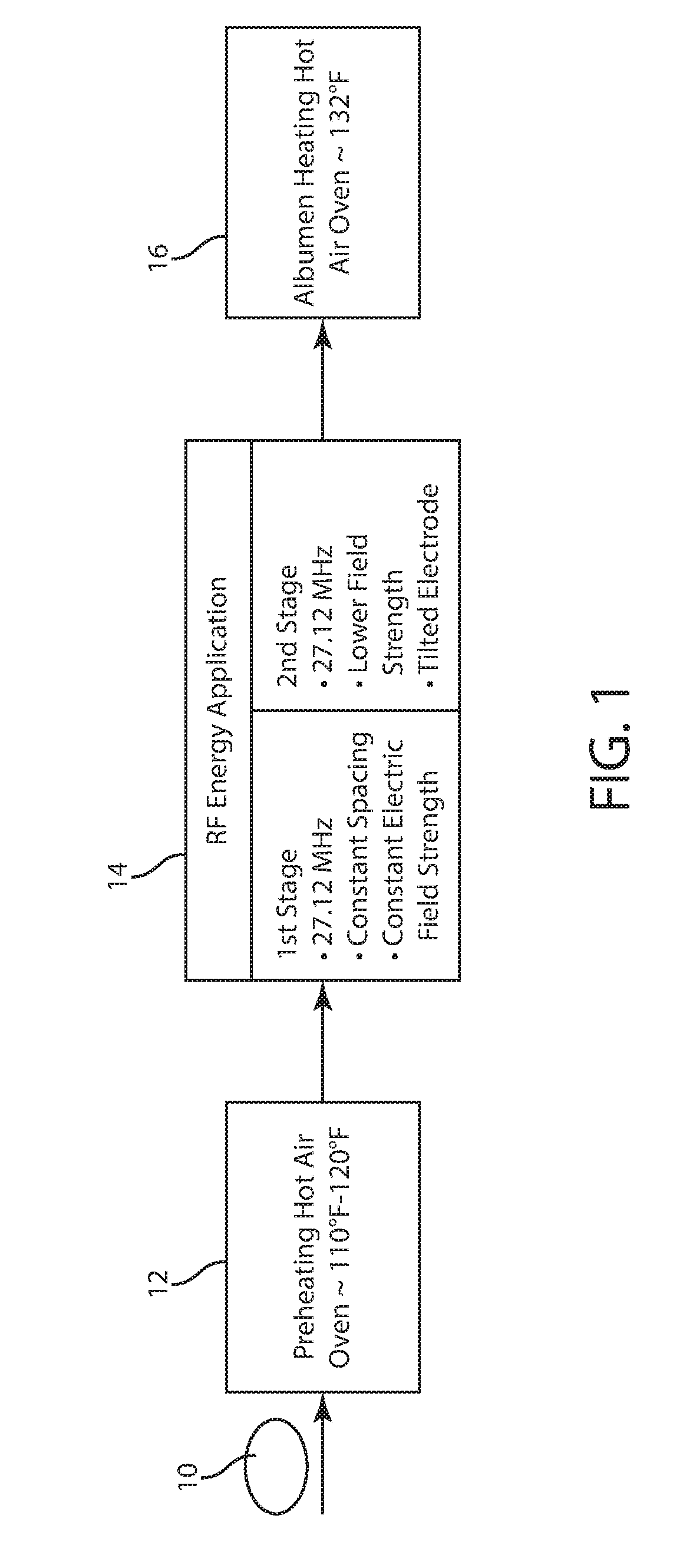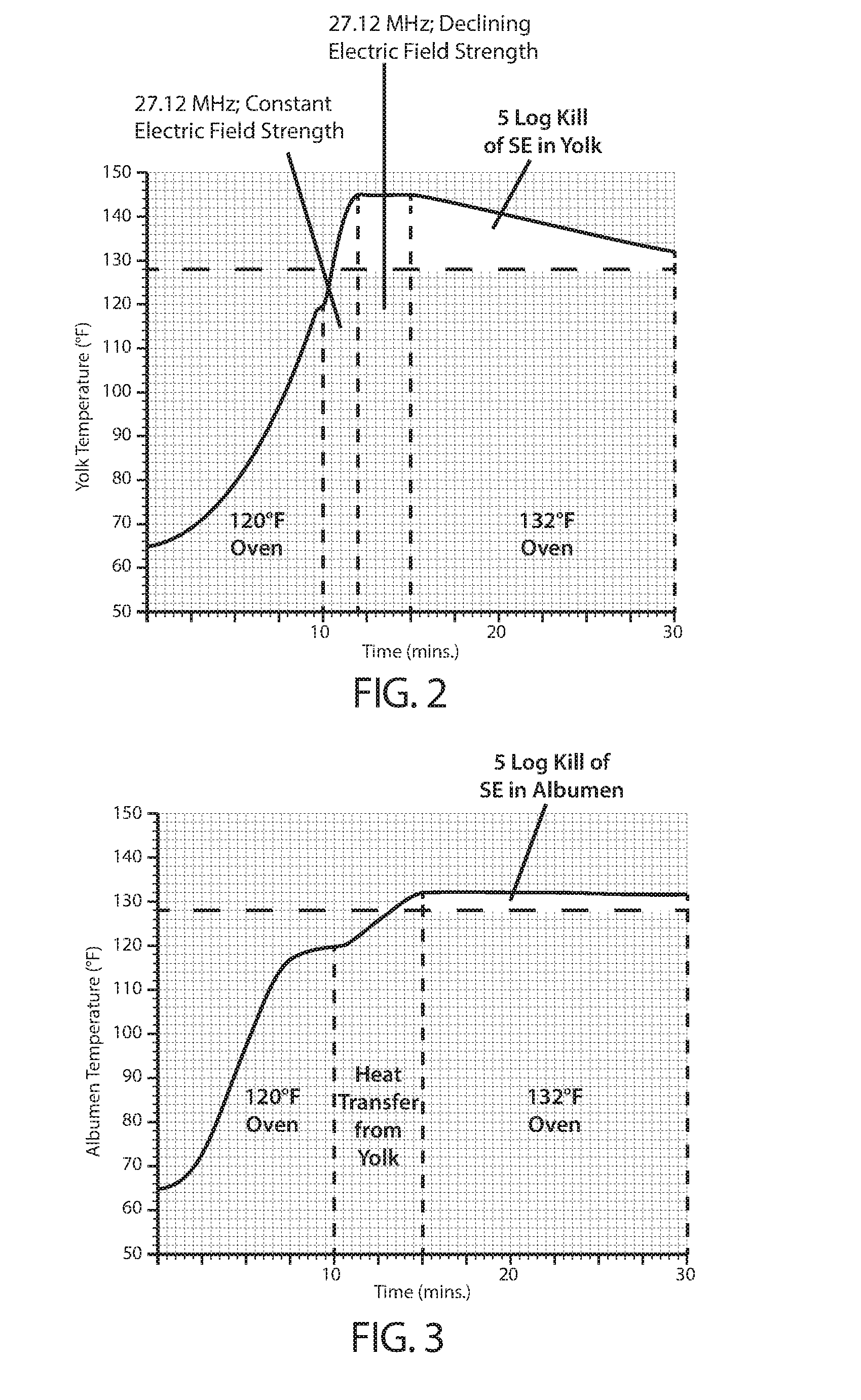Shell Egg Pasteurization Using Radio Frequency Electromagnetic Wave Energy
a radio frequency electromagnetic wave and shell egg technology, applied in the field of shell egg pasteurization using radio frequency electromagnetic wave energy, can solve the problems of reducing the time to heat the yolk for a given temperature change, and prone to heat faster. , to achieve the effect of efficient heating the yolk, reducing the time to heat the yolk for a given temperature change, and reducing the rate of energy absorption
- Summary
- Abstract
- Description
- Claims
- Application Information
AI Technical Summary
Benefits of technology
Problems solved by technology
Method used
Image
Examples
Embodiment Construction
[0023]FIG. 1 is a flow chart illustrating an exemplary embodiment of the invention. Prior to pasteurization, the chicken shell egg or a plurality of chicken shell eggs are desirably tempered to about 65° F. Alternatively, the eggs can be refrigerated at for example 45° F. If multiple eggs are to be pasteurized, it is desirable that all of the eggs be tempered or refrigerated to the same temperature prior to the pasteurization process. Block 12 represents a preheating hot air oven that is maintained at approximately 120° F. The egg 10 or multiple shell eggs 10 are placed in the preheating hot air oven 12 so that the eggs are preheated throughout to a temperature in the range of 110° F. to 120° F. Preheating should take approximately 5 to 15 minutes depending on the initial start temperature of the eggs 10. The purpose of preheating is to increase the temperature of the yolk so that heating downstream with radio frequency electromagnetic wave energy is more efficient, more effective a...
PUM
 Login to View More
Login to View More Abstract
Description
Claims
Application Information
 Login to View More
Login to View More - R&D
- Intellectual Property
- Life Sciences
- Materials
- Tech Scout
- Unparalleled Data Quality
- Higher Quality Content
- 60% Fewer Hallucinations
Browse by: Latest US Patents, China's latest patents, Technical Efficacy Thesaurus, Application Domain, Technology Topic, Popular Technical Reports.
© 2025 PatSnap. All rights reserved.Legal|Privacy policy|Modern Slavery Act Transparency Statement|Sitemap|About US| Contact US: help@patsnap.com



